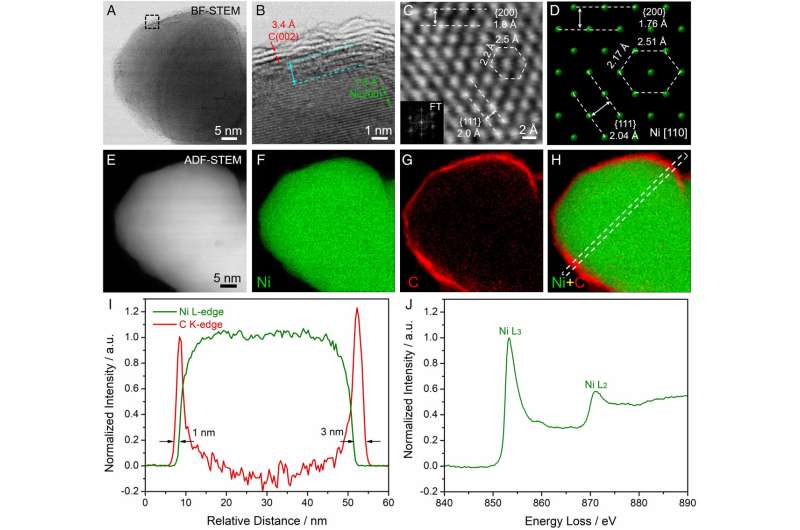Science Daily March 24, 2022
An international team of researchers (USA – Cornell University, University of Madison, Japan, China) designed a nickel-based electrocatalyst with a 2-nanometer shell made of nitrogen-doped carbon. Their hydrogen fuel cell has an anode catalyst consisting of a solid nickel core surrounded by the carbon shell. When paired with a cobalt-manganese cathode, the resulting completely precious-metal-free hydrogen fuel cell outputs more than 200 milliwatts per square centimeter. The nickel oxide species on the surface of the nickel electrode slows the hydrogen oxidation reaction dramatically. The nitrogen-doped carbon coating serves as a protection layer and enhances the hydrogen oxidation reaction kinetics, making the reaction quicker and much more efficient. The presence of the graphene coating on the nickel electrode prevents the formation of nickel oxides dramatically enhancing lifetimes. These electrodes are also much more tolerant to carbon monoxide. The use of this anode would dramatically lower prices enabling the application of alkaline fuel cells in a wide variety of areas…read more. TECHNICAL ARTICLE

Atomic-scale STEM imaging and EELS spectroscopic analysis of core-shell Ni@CNx electrocatalysts. Credit: Proceedings of the National Academy of Sciences (2022)